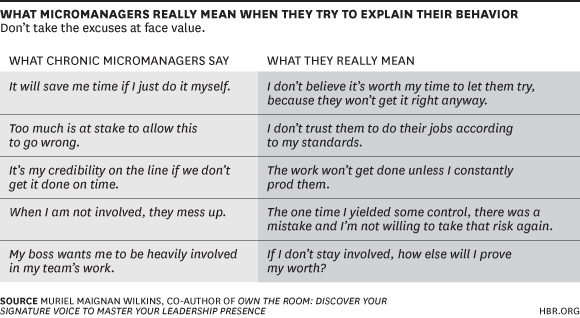For many Directors, micromanaging is often thought of as inconsequential; a little bit of fine tuning here and an extended discussion there. It has all the hallmarks of a thorough and prudent Board member securing down the fact and details.
However, this tendency to lean into operations can be distracting and symptomatic of a lack of separation between governance and management. Challenging micromanaging can be difficult once it has been entertained for an extended period of time.
The Board induction program is the first and greatest opportunity to set personal expectations from the beginning of a Director’s tenure.
Identifying micromanagement around the Boardroom
If a Board's decision making is likely to recede into the weeds its productivity and effectiveness is greatly diluted, which in turn diminishes the ability of the Board to make strategic decisions.
To a micromanager, tasks and activities are perpetually ‘ongoing’ without ever being satisfactory and frustration erupts when a decision does not align with their own chosen outcome.
Not only will this create pockets of internal stress or tension among Board members it will erode the morale of senior staff or management who are being denied their responsibilities, and continually distracted by micromanagement questions and expectations.
Image via: www.hbr.org
What might this look like? Consider a Board focusing on the exact details of a very minor contract. The details of the contract are important, but dedicating Board minutes to fleshing out how it will be implemented (before a final decision has been made) is wasteful when compared to looking at the strategic implications of accepting the contract in the first place.
Of course, every situation requires a nuanced response. But remember, each decision made by the Board should be linked to the achievement of key strategies, which bring it closer to achieving its vision.
When micromanaging takes up space in your board agenda, what it supplants are the strategic conversations that can lead to bigger opportunities.
Coffee break:
WHAT DO NEW DIRECTORS THINK OF YOUR BOARD INDUCTION PROGRAM?
Helping new Directors get the most out of your existing induction program, this 10-part video companion walks them through your existing Board induction materials, leaving them confident and ready for the first Board meeting.
Being Strategic: Setting A Precedent During The Board Induction Program
So how do you keep the Boardroom focused on the future? As a Board member, it is your responsibility to look at everything from a strategic viewpoint: identify the possible futures and plot a pathway towards them. This is the foundation of good governance and it begins with the Board induction program.
During the induction, a formal introduction to the organization and its governing structure is provided. New directors need to make note of the strategic issues they must be aware of without funneling conversation into areas which others would consider unnecessary. A great way to achieve this balance is to reflect on important comments or questions before announcing them.
Take care to examine the implications of your comments: are they reactive, or do they orient the conversation with a strategic focus? This goes some way to challenge short-termism around the board.
If all discussion is naturally focused on creating the future then the Board is in a better position to teach its new inductees how to contribute. Stamping out micromanagement at the Board level begins with setting the right precedent for others to follow.
This habit extends into monitoring comments made by fellow Directors: can you pinpoint strategic issues which underpin these comments? If not, and if the conversation is taking a lengthy detour, then it may be in each Directors interest to refocus the discussion.
While this is not an invitation to be critical of others, you can call upon yourself to respond by returning the Board meeting to its core purpose, creating a strategic future. After others have accepted this new frame of reference, they may begin to build upon the conversation in a more constructive manner.
Teaching new Directors the importance of monitoring themselves and their peers, creates an environment whereby extremely effective meetings are a natural result.
3 ways to circumvent micromanagement
1. Refocus staff reports back to strategic implications for the future, not just historical reports of what has happened.
2. Refocus operational discussions so they explore strategic implications, rather than focusing on operational minutae. Sometimes a meeting with a relevant staff member to discuss strategic implications behind operational issues can provide the right level of detail without wasting the time of the Board.
For example, rather than a lengthy description of who did or did not attend an event, refocus the conversation on strategic stakeholder engagement and any strategic insights developed from who did or did not attend.
3. Take personal responsibility to be the strategic Board Director the rest of the Board needs. This becomes paramount if you are surrounded by micromanagers. What you choose to be and do will provide the mentoring and guidance others may never have had. Emulate the behavior you know is needed.
Micromanaging is encouraged if left unchallenged. During Board meetings, and in front of new inductees, it falls on the individual Director to promote the right behavior for the Board.
Your Board induction program provides the ideal context to position new Directors and to retrain existing Directors on the importance of remaining focused on the vision, strategy and the future of their communities.
Was this article useful? Leave your comments in the fields below.
Help New Directors Step up on your Board
Recommended for you
Induction Insights for Directors is a 10-part video companion designed to work with your existing induction program to build director confidence and skill before the first board meeting.
After input and Beta testing from over 400 CEOs and Board members, this program walks you through your existing Board induction material: everything from extracting strategic insights from your financial reports to reducing micromanagement around the Boardroom.
Sign up for a free trial and discover just how productive your Board induction can be.




